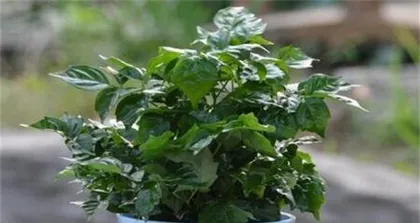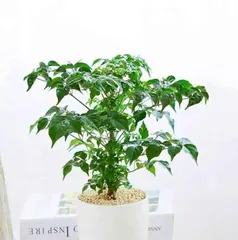As a common indoor potted plant, the happiness tree plays a very important role in our homes. It not only beautifies the living space but also purifies the air, relieves stress, and improves sleep. However, to ensure the happiness tree grows strong and vibrant, we need to master some care methods and techniques. Below, we will introduce the potting and care methods for the happiness tree in detail.

I. Potting Time
1. Choosing the Potting Time
When choosing the time to pot the happiness tree, we should follow the best times, which are spring and autumn. During these seasons, the temperature is suitable and the soil moisture is more stable.

2. Note on Transplanting with Original Soil
Before potting, we need to remove all the original soil from the happiness tree. This can ensure the freshness of the soil and effectively prevent the occurrence of pests and diseases.
II. Choosing the Right Soil
3. Choosing Nutrient-Rich Soil

The happiness tree is relatively cold-tolerant and drought-tolerant, but it has high requirements for soil quality. We need to choose a soil that is rich in nutrients and has good permeability, such as humus soil.
4. Avoid Using Overly Fertilized Soil
The happiness tree grows slowly. Using overly fertilized soil can damage the roots, slow down growth, and even lead to death.
III. Care Methods
5. Light
The happiness tree needs sufficient sunlight for photosynthesis, but direct sunlight can scorch the leaves. We should place the happiness tree in a location with weaker light, such as next to a window.
6. Watering
The happiness tree needs to maintain moderate humidity. In hot and dry summers, it needs watering once a day, while in winter, the watering frequency can be reduced appropriately.
7. Fertilizing
The happiness tree grows slowly, so it can be fertilized appropriately in spring and summer. Generally, fertilizing once or twice a week is sufficient.
8. Pruning
The happiness tree needs regular pruning to maintain its beautiful shape. Pruning is usually done in spring and autumn, and care should be taken to keep the trunk intact.
IV. Common Pest and Disease Control
9. Leaf Wilt
If the happiness tree is in a state of drought for a long time, or if the soil nutrients are too much or too little, leaf wilt will occur. At this time, watering needs to be increased, and the soil nutrients adjusted.
10. Powdery Mildew
Powdery mildew is a common pest and disease that can cause the leaves to turn white and, in severe cases, lead to death. At this time, we can use pesticides for spraying.
11. Aphids
Aphids suck the sap from the plant, causing the leaves to turn yellow. At this time, we can use soapy water or ethanol for spraying.
12. Spider Mites
Spider mites tend to breed in dry environments, which can cause yellow spots on the leaves. At this time, we can use pesticides for spraying.
V. Common Mistakes
13. Overwatering
Overwatering can make the soil too moist, causing the roots of the happiness tree to rot. We need to master the skill of watering appropriately.
14. Over-Fertilizing
Excessive fertilization can lead to an excess of nutrients in the soil, slowing down the growth of the happiness tree. We need to follow the principle of moderate fertilization.
15. Over-reliance on Sunlight
The happiness tree needs sufficient sunlight for photosynthesis, but direct sunlight can scorch the leaves. We should place the happiness tree in a location with weaker light.
The happiness tree is a common indoor potted plant, but to make it grow strong and vibrant, we need to master some care methods and techniques. We can start from aspects such as potting time, soil selection, care methods, pest and disease control, and common mistakes to create a happy space for our homes.